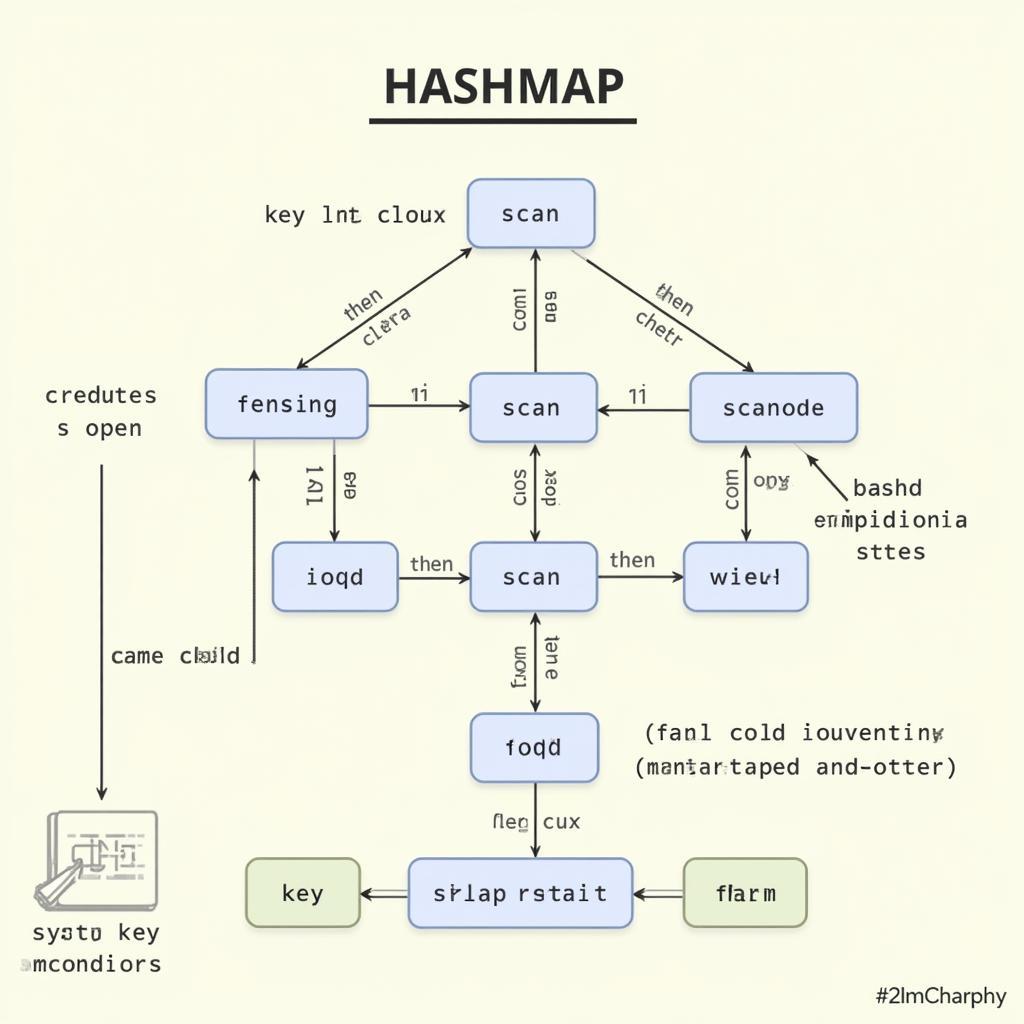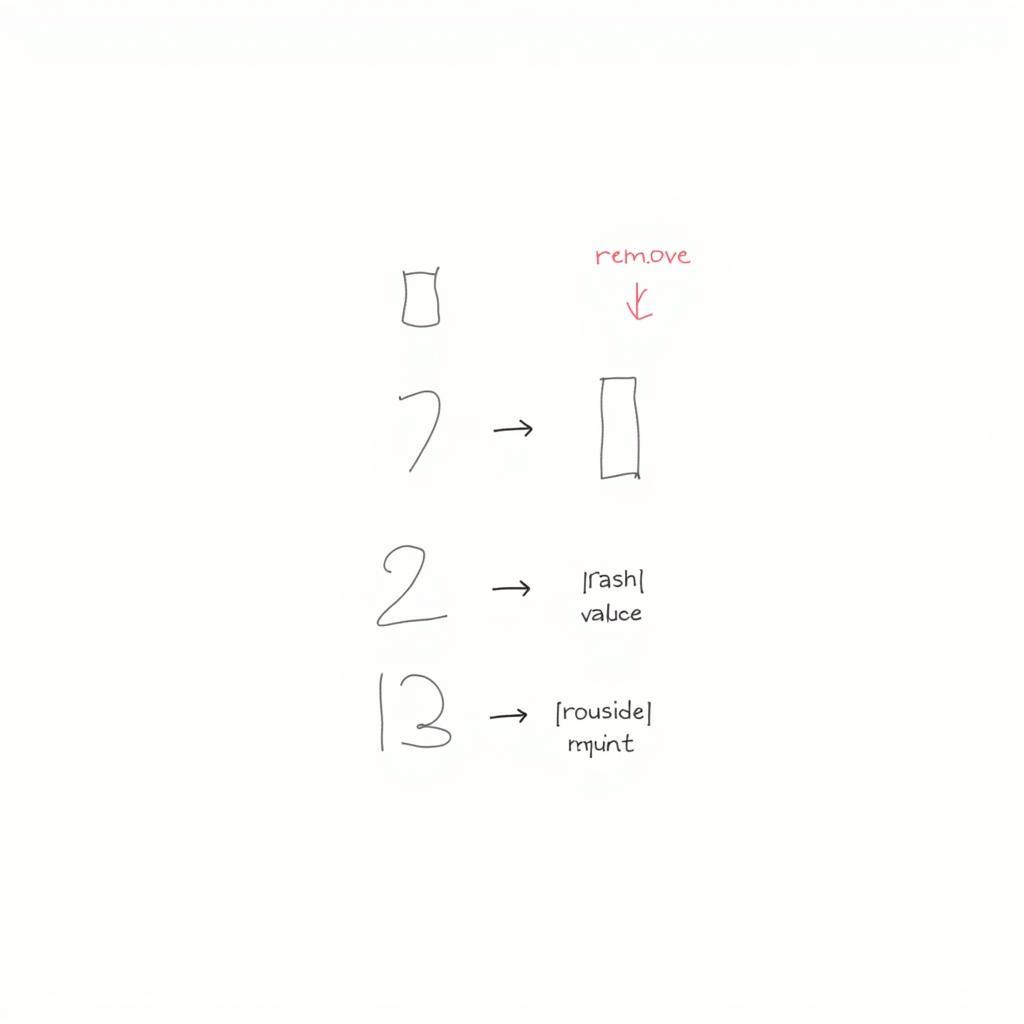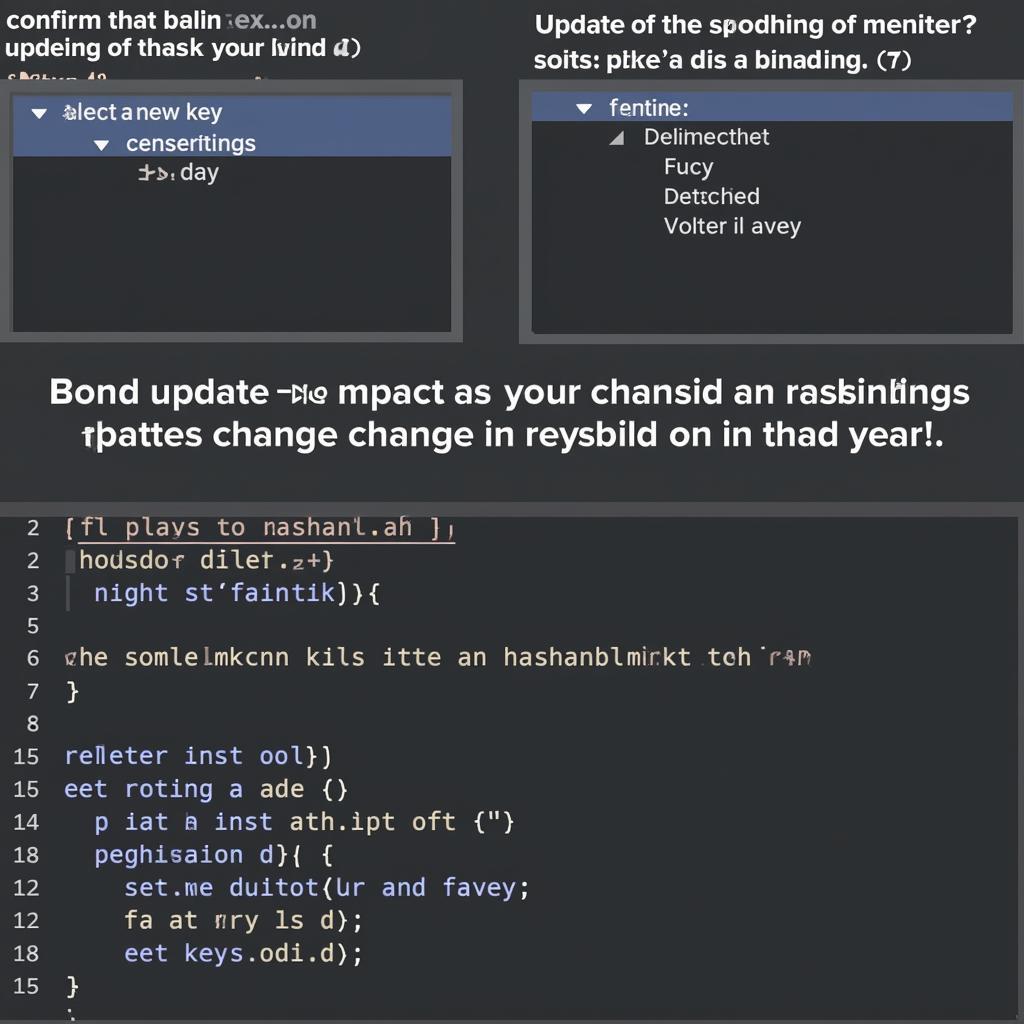How to Unbind a Key in Rust
October 31, 2024Unbinding a key in Rust isn’t directly supported in the same way you might find in game engines or GUI frameworks. Rust focuses on lower-level input handling, meaning you have more control over how key presses are processed, but also means you need to manage keybindings yourself. This article dives deep into various approaches to effectively manage and “unbind” keys within your Rust applications, from simple examples to more complex scenarios. We’ll cover different ways to handle input and how to implement keybinding logic that allows for dynamic unbinding.
Managing Keybindings in Rust
One common method for handling keybindings in Rust involves using a HashMap to store the associations between keys and their corresponding actions. This data structure allows for efficient lookup and modification of bindings.
use std::collections::HashMap;
// Define an enum for actions
enum Action {
MoveUp,
MoveDown,
MoveLeft,
MoveRight,
Jump,
}
fn main() {
let mut keybindings: HashMap<u32, Action> = HashMap::new();
// Bind keys to actions (using scancodes for example)
keybindings.insert(273, Action::MoveUp); // Up arrow
keybindings.insert(274, Action::MoveDown); // Down arrow
keybindings.insert(276, Action::MoveLeft); // Left arrow
keybindings.insert(275, Action::MoveRight); // Right arrow
keybindings.insert(32, Action::Jump); // Spacebar
// ... (Input handling logic) ...
}This example demonstrates how to map specific key scancodes (numerical representations of keys) to actions within your game. Now, let’s explore how to “unbind” these keys effectively.
 Rust Keybinding HashMap Example
Rust Keybinding HashMap Example
Implementing Unbinding Logic
Essentially, “unbinding” a key means removing its association with a specific action. With the HashMap approach, this is as simple as removing the key-value pair.
// ... (Inside the input handling loop) ...
// To unbind the Up arrow key:
keybindings.remove(&273); This code snippet demonstrates how to remove a specific keybinding from the HashMap. By removing the entry associated with the keycode, the key is effectively unbound.
 Removing a Keybinding in Rust
Removing a Keybinding in Rust
Advanced Unbinding Scenarios
Consider a scenario where you want to temporarily disable a keybinding, perhaps for a specific game state, and then re-enable it later. Instead of completely removing the binding, you could use a boolean flag to toggle its activation.
use std::collections::HashMap;
// ... (Action enum and keybindings HashMap as before) ...
let mut enabled_bindings: HashMap<u32, bool> = HashMap::new();
// Initialize all bindings as enabled
for key in keybindings.keys() {
enabled_bindings.insert(*key, true);
}
// ... (Inside input handling loop) ...
// To temporarily disable the Jump action:
enabled_bindings.insert(32, false);
// To check if a binding is active:
if let Some(is_enabled) = enabled_bindings.get(&32) {
if *is_enabled {
// Perform the Jump action
}
}
// To re-enable the Jump action:
enabled_bindings.insert(32, true);
This provides a more flexible approach to managing keybindings, allowing you to toggle them on and off without rebuilding the HashMap.
Dynamic Key Rebinding
Your game may require dynamic rebinding, where the player can change key assignments during runtime. This involves updating the HashMap with the new key-action associations.
// ... (Inside a rebinding function) ...
fn rebind_key(keybindings: &mut HashMap<u32, Action>, old_key: u32, new_key: u32) {
if let Some(action) = keybindings.remove(&old_key) {
keybindings.insert(new_key, action);
}
} Dynamic Key Rebinding in Rust
Dynamic Key Rebinding in Rust
Conclusion
While Rust doesn’t offer a direct “unbind key” function in the traditional sense, we’ve explored multiple strategies to effectively manage and manipulate keybindings within your applications. From using HashMap to store and remove key-action associations, to implementing toggleable bindings and dynamic rebinding, these approaches offer flexibility and control over how your Rust program responds to user input. By understanding these techniques, you can create responsive and customizable input systems tailored to your specific needs. Remember, effective key management is crucial for creating a polished and enjoyable user experience.
FAQ
- What is a key scancode?
- How can I get the scancode of a key press in Rust?
- Are there any crates that simplify keybinding management in Rust?
- How can I handle multiple keys pressed simultaneously?
- What are the performance implications of using a HashMap for keybindings?
- How can I integrate keybindings with a GUI framework in Rust?
- What are some best practices for handling input in a Rust game?
Related Resources
- Key Input Handling in Rust
- Advanced Input Management Techniques
- Using Crates for Game Development
Kêu gọi hành động: Khi cần hỗ trợ hãy liên hệ Số Điện Thoại: 0915117113, Email: [email protected] Hoặc đến địa chỉ: Tổ 3 Kp Bình An, Phú Thương, Việt Nam, Bình Phước 830000, Việt Nam. Chúng tôi có đội ngũ chăm sóc khách hàng 24/7.